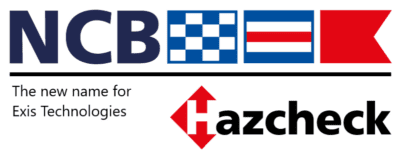The environmental impact of dangerous goods disasters at sea, forwarder magazine, October 2021
It is difficult to ignore the dramatic impact that disasters at sea involving the carriage of dangerous goods can cause in terms of loss of life, damage to vessels and cargo and, inevitably, the contribution to environmental damage.
On 6 March 2018 the Maersk Honam caught fire while sailing in the Arabian Sea. Five members of the crew of 27 were killed, including one rescued crew member who died later from injuries. The Maersk Honam fire took 5 weeks to get under control in March 2018, filling the atmosphere with carbon dioxide, a key contributor to greenhouse gases. The cause of the fire was suspected to be misdeclared or undeclared DG cargo.
In May 2021 Sri Lanka faced one of the worst marine wildlife disasters in its history, after a burning ship spewed chemicals and microplastics into the ocean. The MV X-Press Pearl was carrying 1,486 containers, many of which contained dangerous goods, including nitric acid, caustic soda, sodium methoxide and methane as well as a huge amount of plastic raw materials. A container leaking nitric acid is thought to have been the cause of the fire which broke out as the ship was about to enter the capital Colombo. Tonnes of microplastic granules from nearly 1,500 containers on the 6 month old ship inundated the country’s beaches and chemicals mixing with seawater caused devastation to marine species and coral reefs.
With containerships getting bigger every year, the number of containers being shipped across the world continues to grow. The largest containership in the world at the present time, the 24,000 TEU Evergeen ship ‘Ever Ace’ can transport 23,992 twenty foot containers. With bigger and bigger ships and more containers carrying DG the potential for incidents at sea also continues to grow.
What are the regulations for transporting DG by sea?
There are two international conventions produced by the International Maritime Organization (IMO), which govern the transport of dangerous goods (and also non DG goods):
SOLAS The International Convention for the Safety of Life at Sea which deals with the safety aspects of the transport of dangerous goods by sea.
MARPOL The International Convention for the Prevention of Pollution from Ships which deals with prevention of pollution arising from the transport of dangerous goods by sea
All IMO Member States are required to implement national legislation to address the transport of dangerous goods, through their legal obligations under the SOLAS and MARPOL Conventions.
In 1992 MARPOL’s Annex III Prevention of Pollution by Harmful Substances Carried by Sea in Packaged Form entered into force. This contains general requirements for the issuing of detailed standards on packing, marking, labelling, documentation, stowage, quantity limitations, exceptions and notifications. “Harmful substances” are those substances which are identified as marine pollutants in the International Maritime Dangerous Goods Code (IMDG Code). To Assist Member States, IMO produces a detailed set of requirements covering the transport of packaged dangerous goods by sea in a separate Code; the International Maritime Dangerous Goods (IMDG) Code.
The primary purpose of the IMDG Code’s classification system is to:
• Identify goods which are considered to be dangerous for transport.
• Identify the dangers which are presented by dangerous goods in transport.
• Ensure that the correct measures are taken to enable these goods to be transported safely without risk to persons or the environment (both within the port and on the ship).
In an interview with Container News, in October 2021 IMO’s container expert Mr Bingbing Song addressed many of the key issues arising from their Cargo Integrity Campaign last year.
He commented that there is a need to make sure that cargo is properly identified and declared well before the container reaches the ship, “It cannot be left to the very last stage,” said Song. “I firmly believe that, tackling the misdeclaration and non-declaration of dangerous goods and fires on board container ships must be a collaborative effort, not only regulators, but also shippers, carriers, freight forwarders and all the stakeholders in the supply chain must share the responsibility, everyone has a role to play.”
How the DG supply chain can help
A key factor in helping to stop incidents at sea is prevention, making sure that dangerous goods being carried in containers can reach their destination safely. This means that those working on the shore side need to have the tools and training to deal with any issues before containers are loaded onto the ship. It is the responsibility of everyone in the supply chain to play their part.
How Exis can help BEFORE SHIPMENT
As a supplier of tools and training to help the supply chain, Exis is committed to our mission of Safety of Life and Cargo at Sea with our range of Hazcheck Systems and e-learning tools for regulatory compliance.
E-learning
IMDG Code e-learning 40-20 is mandatory online training for all shore side staff involved in the handling and transport of dangerous goods by sea, including freight forwarders.
Introduction to the CTU Code is online training for safe handling and packing of CTUs. Poor container packing is responsible for an alarmingly high number of incidents.
Hazcheck Systems
Hazcheck Online – web-based tool for the shipment of DG by sea– check dangerous goods note being supplied with the shipment is correctly consigned before it is moved further along the chain.
Hazcheck Detect – cargo screening tool which scans cargo descriptions for undeclared or misdeclared DG. Allows non-compliant cargo to be detected within seconds rather than days. Last minute changes to bookings can be picked up in real time so problematic cargo is not loaded onto the ship.
Hazcheck Inspections – web-based portal for inspection companies to inspect containers and record findings before shipment. Remote inspections available.







